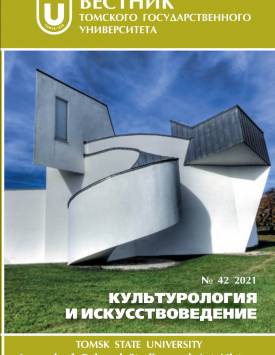Local spirits of the Mansi people: loci, space, ties
The article is prepared on the base of works by K.F. Karjalainen, A. Kannisto, V.N. Chernetsov, E.I. Rombandeeva, R.K. Bardina, I.N. Gemuev, A.I. Sagalaev, A.V. Baulo. Based on the classification of Karjalainen, the author refers the ancestral (family), village and territorial spirits to the local spirits. By their origin, they are famous ancestors, founders of villages, former personal spirits, and sons of the supreme god Numi-Tōrum. The list of local spirits fixed on the rivers Severnaya Sosva with Ob region, Lyapin / Sygva, Lozva, Pelym, Tavda, Vagilsk, and Konda is given. They are linked to specific loci: villages, forest areas, or water basins. This localization is of two kinds: both the location of the spirit itself and the territory of its worship. These signs do not always coincide. Different variants of the spatial boundaries of worship of a concrete spirit are revealed among the Mansi people. In some cases, only one spirit is worshipped in a village, in other words, it has here "sole" space. In other cases, when different local spirits are worshipped in the same village, their space is common. An even wider area “belongs” to the spirits worshipped in several villages (loci). The most extensive areas of worship were formed by the territorial ancestor spirits. Most of the local spirits were related to each other. This is most clearly demonstrated by the significant territorial spirits whish are considered the children of Numi-Tōrum - Polum-Tōrum, Nyaras-Nāy-Ekva, Tāgt-Kotil-Ōjka, Āj-Ās-Ōjka, and Nyor-Ōjka. In turn, the children of these original patron spirits dispersed to different parts of the Mansi land, becoming the guardians of both the area and the people living in it. These are the nāj-otyrs that helped people to settle where they now live. They are the masters of loci (villages, towns) and are subordinate to one of the most senior original patron spirits. Thus, the sons of Tāgt-Kotil-Ōjka are the patron spirits in several villages on the Severnaya Sosva River, as well as on the Manya River. Seven bogatyr brothers from the Lozva River made military campaigns over the Sosva River. The ties between the nāj-otyrs were often of a warlike nature. They conquered other people's territories and became patron spirits there. The materials presented in the article draw a general picture of the representations about local spirits (ancestral spirits) among different groups of the Mansi people. The basis of these representations is the general Mansi worldview concept about the origin of these characters, about their structure and relationships. The extensive list of ancestral spirits demonstrates, on the one hand, their localization and, on the other hand, the wide spatial area of worship of the most significant of them.
Keywords
Mansi people, local spirits, location, area of worship, tiesAuthors
| Name | Organization | |
| Lukina Nadeshda V. | National Research Tomsk State University | lunv@mail.ru |
References

Local spirits of the Mansi people: loci, space, ties | Tomsk State University Journal of Cultural Studies and Art History. 2021. № 42. DOI: 10.17223/22220836/42/25
